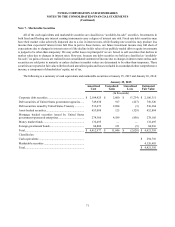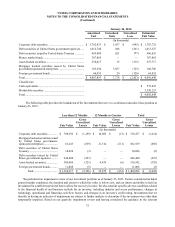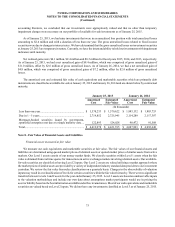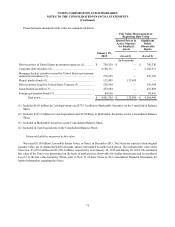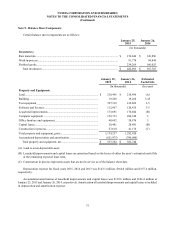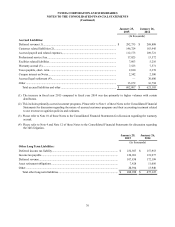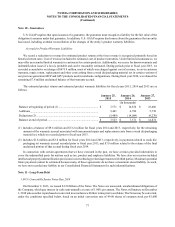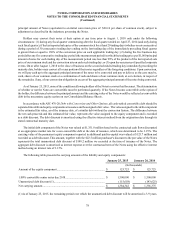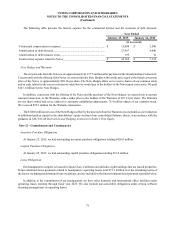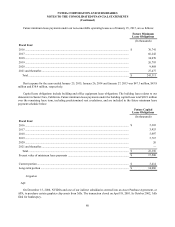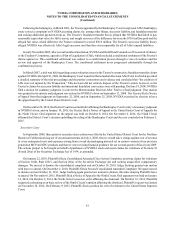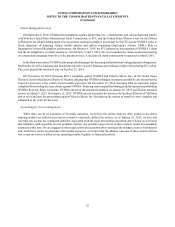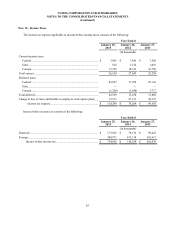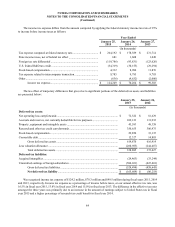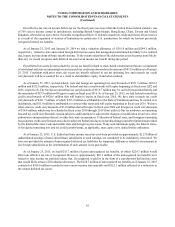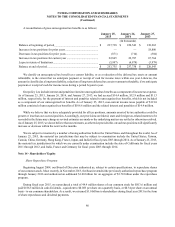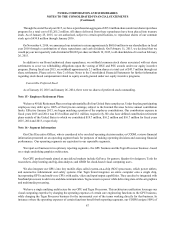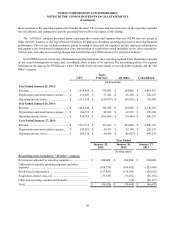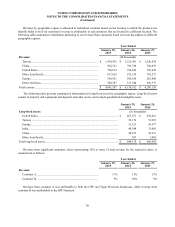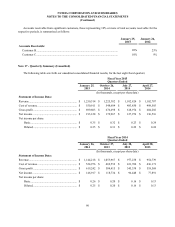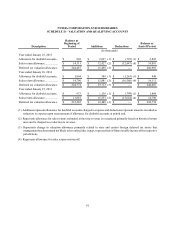NVIDIA 2015 Annual Report Download - page 161
Download and view the complete annual report
Please find page 161 of the 2015 NVIDIA annual report below. You can navigate through the pages in the report by either clicking on the pages listed below, or by using the keyword search tool below to find specific information within the annual report.NVIDIA CORPORATION AND SUBSIDIARIES
NOTES TO THE CONSOLIDATED FINANCIAL STATEMENTS
(Continued)
81
Following the bankruptcy, in March 2003, the Trustee appointed by the Bankruptcy Court to represent 3dfx's bankruptcy
estate served a complaint on NVIDIA asserting claims for, among other things, successor liability and fraudulent transfer
and seeking additional payments from us. The Trustee's fraudulent transfer theory alleged that NVIDIA had failed to pay
reasonably equivalent value for 3dfx's assets, and sought recovery of the difference between the $70.0 million paid and the
alleged fair value, which difference the Trustee estimated to exceed $50.0 million. The Trustee's successor liability theory
alleged NVIDIA was effectively 3dfx's legal successor and therefore was responsible for all of 3dfx's unpaid liabilities.
In early November 2005, after several months of mediation, NVIDIA and the Official Committee of Unsecured Creditors,
or the Creditors' Committee, agreed to a Plan of Liquidation of 3dfx, which included a conditional settlement of the Trustee's
claims against us. This conditional settlement was subject to a confirmation process through a vote of creditors and the
review and approval of the Bankruptcy Court. The conditional settlement never progressed substantially through the
confirmation process.
In March 2007, a trial was held regarding certain valuation issues in the Trustee's constructive fraudulent transfer claims
against NVIDIA. On April 30, 2008, the Bankruptcy Court issued its Memorandum Decision After Trial, in which it provided
a detailed summary of the trial proceedings and the parties' contentions and evidence and concluded that “the creditors of
3dfx were not injured by the Transaction.” This decision did not entirely dispose of the Trustee's action, however, as the
Trustee's claims for successor liability and intentional fraudulent conveyance were still pending. On June 19, 2008, NVIDIA
filed a motion for summary judgment to convert the Memorandum Decision After Trial to a final judgment. That motion
was granted in its entirety and judgment was entered in NVIDIA's favor on September 11, 2008. The Trustee filed a Notice
of Appeal from that judgment on September 22, 2008, and on September 25, 2008, NVIDIA exercised its election to have
the appeal heard by the United States District Court.
On December 20, 2010, the District Court issued an Order affirming the Bankruptcy Court's entry of summary judgment
in NVIDIA's favor, and on January 19, 2011, the Trustee filed a Notice of Appeal to the United States Court of Appeals for
the Ninth Circuit. Oral argument on the appeal was held on October 8, 2014. On November 6, 2014, the Ninth Circuit
affirmed the District Court’s decision upholding the ruling of the Bankruptcy Court and the case concluded on February 5,
2015.
Securities Cases
In September 2008, three putative securities class actions were filed in the United States District Court for the Northern
District of California arising out of our announcements on July 2, 2008, that we would take a charge against cost of revenue
to cover anticipated costs and expenses arising from a weak die/packaging material set in certain versions of our previous
generation MCP and GPU products and that we were revising financial guidance for our second quarter of fiscal year 2009.
The actions purport to be brought on behalf of purchasers of NVIDIA stock and assert claims for violations of Sections 10
(b) and 20(a) of the Securities Exchange Act of 1934, as amended.
On January 22, 2010, Plaintiffs filed a Consolidated Amended Class Action Complaint, asserting claims for violations
of Section 10(b), Rule 10b-5, and Section 20(a) of the Securities Exchange Act and seeking unspecified compensatory
damages. We moved to dismiss the consolidated complaint and on October 19, 2010, Judge Seeborg granted our motion
with leave to amend. On December 2, 2010, Plaintiffs filed a Second Consolidated Amended Complaint. We again moved
to dismiss and on October 12, 2011, Judge Seeborg again granted our motion to dismiss, this time denying Plaintiffs leave
to amend. On November 8, 2011, Plaintiffs filed a Notice of Appeal to the Ninth Circuit. Oral argument was held on January
14, 2014. On October 2, 2014, the Ninth Circuit issued an order affirming the dismissal. On October 16, 2014, Plaintiffs
requested a rehearing or en banc review of the Ninth Circuit’s opinion affirming the dismissal. Plaintiffs’ request was denied
on November 10, 2014. On February 9, 2015, Plaintiffs filed a petition for writ of certiorari to the United States Supreme
Court.


